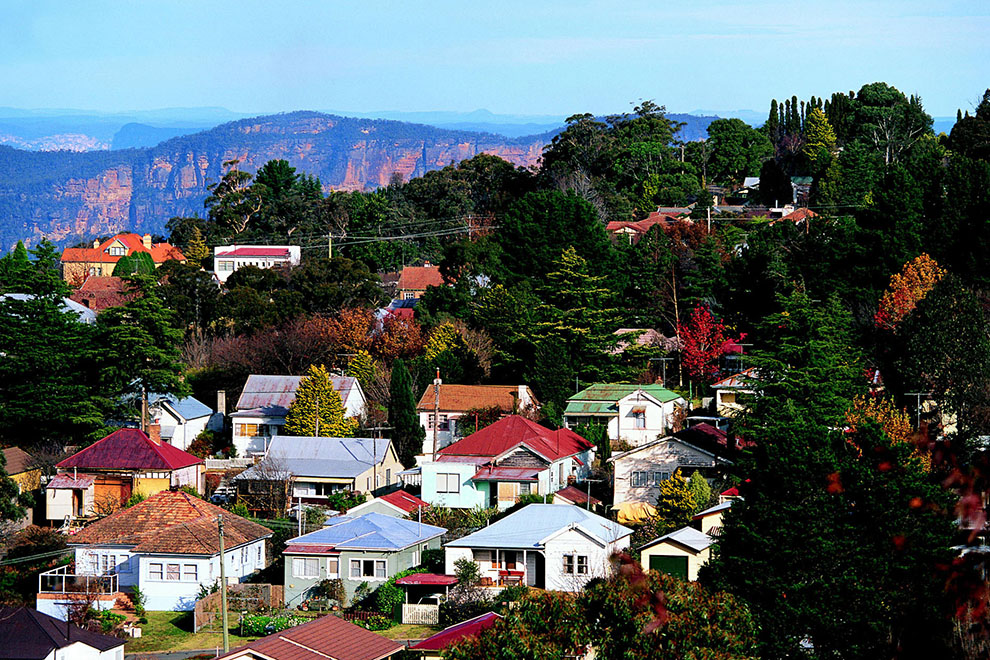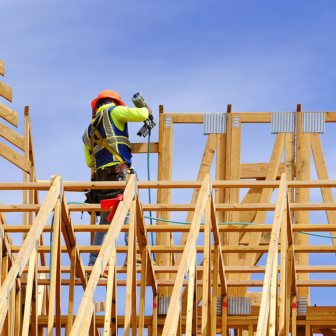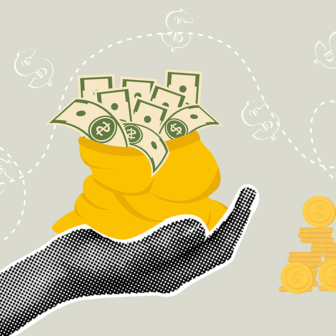House prices are booming in major city centres across Australia. Increasing numbers of investors use tax concessions such as negative gearing, which raises the prices of existing properties. Home ownership is falling among first home buyers and rents have exploded in traditionally affordable suburbs. This combination of factors has a direct impact on vulnerable people, such as those with a mental illness, by putting safe, secure housing out of reach.
The tax treatment of housing disproportionately favours those who own, rather than rent, property. This inverts Australia’s usually progressive tax regime, as those who are already wealthy receive far more benefits than those who are not. And because housing is often the major asset in a family, inability to afford housing just entrenches inequality. For people with a mental illness, insecure tenancies, low incomes and rising housing costs work against their recovery and wellbeing.
This inequality must be urgently addressed as part of broader social reforms for people with disabilities, including psychosocial disabilities. Without a home that is affordable, people with a mental illness can end up in prison, or become homeless.
People on low incomes, many of whom have mental health concerns, are being pushed further and further away from services that people on higher incomes take for granted. If people can’t get access to healthcare, are we permanently consigning them to life at the bottom? How can people recover from mental illness if they don’t have a place to call home?
•••
I first met “Mary” through her music. Late one night, tired from my commute to Sydney, I sat on my back verandah in the Blue Mountains, drinking a glass of wine and smoking a cigarette. The mist had drifted up slowly until all I could see was the faint glow of the moon and the reflection of the streetlights. And through that mist came the sweet sound of Nina Simone, layered over prickly jazz chords.
Mary loved this kind of music; all spiky crescendos and loud wailing brass. Her battered old record player would start up downstairs about nine most nights as she worked through her collection. Occasionally, the needle on the player would get stuck, and small fragments of notes would repeat, and repeat.
It was months later when I finally met my neighbour in person – my commute meant I was rarely home during the day, and asleep by the time she cranked up the tunes each night. But she often took my bin out or brought it back in. One rare weekend at home, I came back from the supermarket, and there was Mary sitting on her doorstep.
She was a tiny lady, all fine-lined skin over pointy bones; thin white hair fading from blonde and bright blue eyes. It was a cold morning, but she was only wearing a t-shirt and skirt. I said hello and she jumped; far away in her thoughts, she hadn’t even noticed I was coming past. I smiled and told her how much I liked her music. It took a while to convince her that I meant it. She lit a cigarette; I put down my shopping bags and did the same.
Over the next few years, Mary and I often had a cigarette on the doorstep. She’d leave me presents when I was in Sydney; coming home, I’d discover a card, or a cake, or some flowers at my door. I’d leave groceries at her door when I knew I’d be away for a week or more. We gardened out the back of the house on those clear, cold and sunny Blue Mountains mornings.
I loved the mountains, despite the commute. I had room to breathe and space that I could never afford in Sydney. I’d trudge up Katoomba Street before six most mornings and let the rattle of the train down the hill lull me off to sleep. I loved the diversity of people in my town; rents were still low enough then that lots of different folks lived together, rubbing up against each other.
•••
Affordable housing
Everyone needs somewhere to live, and yet housing has become just another way to make money. The idea of a right to a home seems quaint in a world of renovation programs and eye-popping auction results that are breathlessly reported in the major newspapers. But it wasn’t always this way.
Previous Australian governments believed that affordable housing was not only important for individuals and families, but also valuable for the wellbeing of the whole Commonwealth. In 1945, a government report stated: “We consider that a dwelling of good standard and equipment is not only the need but the right of every citizen – whether the dwelling is to be rented or purchased, no tenant or purchaser should be exploited for excessive profit.” Public housing was integral through to the 1970s to ensure a degree of equity. By the mid 1960s, one in five Australians lived in public housing.
Over the last two decades, housing has become less and less affordable. Inner-city areas, close to services and work, have become gentrified and expensive. This is more than just the market at work. Government policy now is to favour those who already own property, through negative gearing and capital gains tax concessions, while doing little to support renters, particularly those on low incomes. Governments at all levels have also stepped far away from being direct providers of housing, with new public housing falling to its lowest level in 2007.
The Grattan Institute reported in 2013 that tax concessions worth $36 billion a year went to subsidising those who own property and a further $7 billion went to investors for negative gearing. By contrast, low-income tenants received $3 billion a year in rental support.
Finding somewhere to live in Australia’s major cities is becoming harder and harder, especially for people on low incomes. Anglicare’s affordable housing snapshot this year found that someone on Newstart or the Disability Support Pension could not find an affordable home anywhere in Sydney. For people eligible for public housing, the waiting period can be longer than a decade and social housing, provided by not-for-profit groups, is also in short supply.
Research from SANE Australia shows that many people with a mental illness live on a low income, with one third receiving below $20,000 per year; SANE also found that they contend with high health expenses. Both factors clearly increase their reliance on affordable housing.
Social and public housing are important options for people with a mental illness. But increasingly tough entry requirements for public housing mean that many more extremely disadvantaged people are housed together, further exacerbating health-related disabilities. People with a mental illness report increased anxiety and other symptoms because of the marginal nature of public housing.
Boarding houses have thus become the default housing option for many people with mental illness, particularly following the closure of large institutions. Despite recent NSW reforms to boarding houses, they remain an insecure and sometimes dangerous place to live. These houses are outside the regular tenancy system and provide poor facilities; residents are often exploited and in poor health. Some reform to this system has finally begun, but as recently as 2012 ABC Radio’s Background Briefing reported on the deaths of six residents due to neglect.
At both state and federal levels of government, there are clear policy commitments to “housing first” approaches in mental health policy, which acknowledge that secure accommodation is vitally important. And yet little or no funding is allocated to creating that accommodation. Investment in public housing has dropped sharply over the last few decades. The now-abolished National Rental Affordability Scheme, which operated in 2008–13, gave developers incentives to build and rent lower-priced properties, but it only took affordable housing back to 1980s levels. With nearly half a million lower-priced housing properties needed, it was a drop in the bucket. Given the competition for the few available places, is it any surprise that people with a mental illness end up at the bottom of the pile?
Housing is crucial to mental health, both for people with a mental illness and for those without. The most recent survey of renters from the NSW Tenants’ Union showed they had high levels of anxiety; and this was particularly true for those in housing stress – that is, paying more than 30 per cent of their income in rent. People in both public and private rental properties were affected.
The latest report from the Australian Housing and Urban Research Institute for the Mental Health Commission of New South Wales looked in detail at the links between mental health and housing. It noted:
Social housing can no longer be relied upon as a housing solution for people with mental health issues due to shortages in supply. In order to account for these housing market problems, the private rental market is likely to represent the most important segment of the housing market for people with mental health issues.
Rents, even in outer suburbs, have risen faster than the minimum wage, with the median rent in Sydney now above $500 a week. At the same time, people are renting for longer periods of time, and for more of their lives – one-third of tenants are over forty-five. Tenants have far fewer rights than their counterparts overseas: landlords can evict people for no reason, and there are no caps on rent increases.
People with a mental illness who are employed are more likely to be working part-time, and therefore earning a lower income. SANE Australia has found that people with a mental illness also experience discrimination at work and need a supportive employer. These barriers prevent the increase in income necessary to make housing less precarious.
•••
Katoomba is a tourist town and has been for over a century. Guesthouses line the streets, some now made over as backpacker hostels, some as private rental properties, and some as boarding houses. Behind the shops in Katoomba Street is a rabbit warren of small flats in various states of disrepair and often lacking documentation and regulation. As the Sydney housing boom continued and rents climbed further and further, more people arrived to try to find a place to call home.
And as they came, the people who already had a home here were pushed even further to the margins. Hotels became crisis accommodation, and more people were living in their cars or sleeping rough in the cold bush.
•••
Looking back
In New South Wales, the landmark 1983 Richmond Report laid out the pathways for people with mental illness to move out of institutions and back into the community. This report highlighted what community resources were needed, and the discrimination faced by people with mental illness in accessing services. Richmond recommended that the government provide specific housing allocations for people with mental illness and subsidise places in boarding houses.
A decade later, the nationally focused Burdekin Report found:
One of the biggest obstacles in the lives of people with a mental illness is the absence of adequate, affordable and secure accommodation. Living with a mental illness – or recovering from it – is difficult even in the best circumstances. Without a decent place to live it is virtually impossible…
All the evidence considered by the Inquiry established that the policy of deinstitutionalisation cannot succeed unless it is complemented by appropriate policies on housing – and a commensurate allocation of resources.
The lack of accommodation, over thirty years later, is still one of the biggest barriers for the independence and dignity of people with a mental illness. The failure to address the cost of housing is causing real harm in the community, while others get rich.
In 2002, the NSW Parliament Select Committee on Mental Health emphasised that people in public housing needed extra support to keep up with their rent, and suggested that specific housing be provided for people with a mental illness. In a statement to the committee that is very familiar, Mission Australia said that the Sydney housing market was “characterised by high rents, low vacancy rates and very high cost of home purchase.”
The 2003 Mental Health Council of Australia’s Out of Hospital, Out of Mind report also made this clear:
There is a distinct lack of stable and appropriate housing for mental health consumers. When consumers are discharged from hospital it is not uncommon for them to be left without any accommodation options and end up on the street; it was reported that many consumers lose their housing during their hospitalisation. There was the concern that many boarding houses are closing and the criteria for eligibility for housing is getting harder.
People with mental illness, advocates and carers have made this point over, and over, and over again. Yet current headlines are about which suburbs have cracked the one million dollar mark, instead of about how many people are being forced further and further from services and into substandard, insecure housing. For Aboriginal and Torres Strait Islanders, who already make up a higher percentage of homeless people, the situation is even more dire.
In 2001, a coordinated group of community sector organisations employed a health worker for twenty-five hours a week to work with people living in boarding houses in the Blue Mountains area. This followed from other projects, all short-term, that demonstrated the myriad problems for people with mental health disabilities living in these kinds of homes. Neglect, abuse and appalling other health problems were rampant. A report on the project noted:
The “episode of care” model of health service provision with an emphasis on management of symptoms of “illness” rather than a more global view of “disability” can be seen to have failed many residents of boarding houses who constitute one of the most marginalised, passive and disenfranchised populations, least likely to initiate or maintain contact with service providers.
•••
In 2009, ABC TV’s Four Corners featured a program on homelessness in Katoomba. A motel converted to crisis accommodation; exploitative landlords; terrible boarding house conditions. None of these a surprise to people living there.
Committees were formed, action plans were agreed, and a few new properties were built. But the fragile links set up between support services, housing providers and people at risk of ending up homeless proved not enough to help Mary.
Mary’s situation was what was meant to happen when the large psychiatric institutions were shut down in the 1980s. Her diagnosis of schizophrenia, which once condemned people to a life locked away, was no longer a barrier to her living in the community and having her music close by. Here, in her little, sparsely furnished flat, she could have friends over and stay up late dancing. Mary’s case worker visited regularly, her medication helped smooth out the rough edges of her illness and people in the neighbourhood looked out for her, reminding her to eat when her dreamings took her far away.
She had been a teacher in a former life; her only child was in another state. I don’t know how old she was, or how long she’d lived downstairs. When I asked, she told me that she’d always been there. She coughed long and hard, then had another cigarette.
•••
Mental illness, homelessness and a secure home
People with a mental illness make up a large percentage of people who are homeless, and at the same time, homelessness contributes to poor mental health. Homelessness can include rough sleeping, overcrowded homes, couch surfing, and living in temporary or emergency accommodation. A study of people with a mental illness found there was a clear connection between stable, secure housing and their ongoing health:
Housing is central to building a future. It offers a secure base. When that base is established, friendships, social networks and meaningful activities can develop. Consumers prefer housing that involves living alone or with a friend of their own choosing and having access to mental health support needs.
The Australian Human Rights Commission links homelessness with a range of other rights, such as the right to health, privacy and personal safety. One contributor to homelessness for people with a mental illness is their difficulty in maintaining a tenancy – in either public or private accommodation. The Homeless Persons’ Legal Service found that people who were hospitalised sometimes lost their home, or were housed far away from their regular treatment centres.
An innovative program, the Housing and Accommodation Support Initiative, or HASI, was set up in New South Wales in 2006 to bring together a range of services to assist people to maintain a tenancy and stay out of hospital. HASI focuses on integrating services with housing, rather than the usual separation of housing from health and wellbeing. The majority of people using HASI have schizophrenia and are either homeless, or at risk of homelessness. The 2012 evaluation of the program showed a remarkable improvement in people’s lives, with 90 per cent able to keep a roof over their heads. The report noted:
Most people enter the program with a history of unstable housing, including almost half with no home immediately prior to entering HASI, for example, from hospital, prison, living with friends or family, living in a boarding house, in other unstable or temporary housing or primary homelessness. Many consumers who were already housed before joining HASI had also experienced unstable housing in the past.
Housing is a key part of the submission from the Mental Health Commission to the proposed Strategic Plan for Mental Health in New South Wales, but to date there has been no commitment from the NSW government to increase the supply of affordable housing, or create further different models of social housing such as HASI.
•••
A few weeks before Christmas one year, I got home from Sydney late one Friday night – the light tricking me into staying at the office longer than I had intended. Walking home from the station was a blissful relief from a day sweating in the sweltering heat on the plains. Checking the letterbox, I found a note from the real estate agency that I promptly ignored until the next day. I’m glad I did, because an eviction notice is never a good way to end the week.
The owner was selling the whole building, and we all had to get out. At Christmas. Of course they had every right to do that under the current law, but it was a punch in the guts to have to leave my lovely flat, with the wonderful verandah. And then I heard screaming.
The eviction notice broke Mary. I found her curled into the tiniest of balls on her lounge room floor, smashed records lying all around her. I rang the mental health crisis team and stayed with her till they came. There was nothing I could do to comfort her; she couldn’t conceive of not being able to stay in her home. And the loss of her home took something else away from her – independence.
Mary never came back. Her meagre belongings were packed away and space found for her in a nursing home that specialised in psycho-gerontology and “secure facilities for wanderers.” And I only knew that because the bloke at the tobacconist told me that Mary had come in after running away.
I only saw her once after that, passing her on the street. She didn’t remember me – away from what was familiar, I was just another intrusive noise. I don’t know if she has her music anymore, those soaring voices she’d accompany in fragile soprano tones.
•••
Over and over reports are written about why housing is as important as having enough to eat, and just as integral to health and wellbeing. Yet they are ignored, condemning people on low incomes to poor health. A place to call home is more than a roof over our heads, or a way to make money. Secure, affordable housing has to be part of all health policies, particularly for people with a mental illness.
Without a home, it’s damn hard to get well and stay well. •
More information about the Gavin Mooney Memorial Essay Competition and a list of runners-up can be found at Croakey.




